- europages
- >
- COMPANIES - SUPPLIERS - SERVICE PROVIDERS
- >
- particle separation
Results for
Particle separation - Import export

VIRA ISI
Turkey
The ViraClean is a high-efficiency in-line dirt trap, suitable for use on heating and chilled systems. Corrosion is a process that is difficult, if not impossible, to stop once it has begun. Corroded metal becomes dislodged and becomes water-borne debris. This debris, along with other contaminants in the system, clogs heat exchanger channels, fouls filters, and causes excessive wear in circulating pumps. Effective removal of debris is essential for increasing the operational life of the system as a whole.
Request for a quote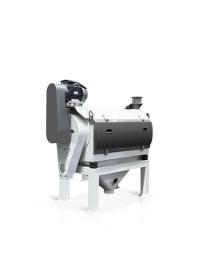
ROBINSON CO.
Turkey
It is designed for separating flour particles stuck on bran and remaining in bran in flour and semolina factories. The flour and ash particles in the bran are separated and brought into the system and the efficiency is increased and efficiency is provided.
Request for a quote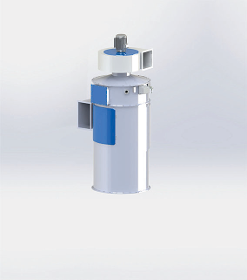
PARSMEGA MAKINA
Turkey
This type of filters are used to separate dust particles from dust-laden air, they can be used with positive or negative pressure, the filter bag is cleaned by 0.5 bar pressurized clean air that does not contain oil and water.
Request for a quote
ROBINSON CO.
Turkey
Jet filter cleans the air dust mixture from dust, keeps the dust and ensures that the clean air is discharged from the chimney. The circular filter body first performs the cyclone system purification, and ensures that all dust particles are retained through the bags. It is used to separate the particles in the air used for aspiration and transport in flour mills from the air. Air containing dust and flour enters the machine and this dust sticks to the filter bags in the machine. First purification is carried out thanks to the centrifugal power generated in the round filter body. These filter bags are whipped with compressed air and the dust goes down to the bottom of the filter. Blower or compressor is used for this cleaning process. A bottom scraper or rotoflow is used for throwing these dusts accumulated under the machine. Applications Fields ◾ Food industry ◾ Flour and semolina mills ◾ Feed mills ◾ Grain cleaning plants ◾ Corn processing plants
Request for a quote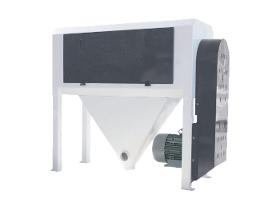
ROBINSON CO.
Turkey
By separating the flour particles adhered to and remaining in the bran, it both prevents the loss of flour and increases the efficiency. Thanks to the special pallets on the rotor that rotates horizontally, the flour is separated from the bran while being thrown towards the screen. The centrifugal directed product strikes the pore size preselected screen. Thus, it is ensured that the flour particles are directed to the outside of the sieve and the bran to the outlet channel from the inside. Applications Fields ◾ Flour Mills ◾ Semolina Mills
Request for a quote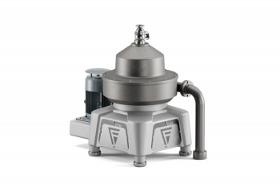
FLOTTWEG SE
Germany
In many aspects of process engineering, separators are used for mechanical separation and clarification of mixtures comprising solids and liquids. A separator is liquid-oriented and works with a higher rotation speed than a decanter. As a result, the generated centrifugal acceleration (g number) of a separator is significantly more powerful than in decanter centrifuges. Flottweg separators are suitable for separating ultrafine solid particles from a liquid (clarifier separator). Furthermore, Flottweg separators are suitable for separating mixtures of liquids with different densities at the same time as separating a solid (purifier). Flottweg AC separators (Automatic Cleaning) can be used in a wide range of applications, and are also available in various configurations. — Beverage and brewing industry — Starch industry — Chemicals and biotechnology — Extracting and processing fats and oils
Request for a quote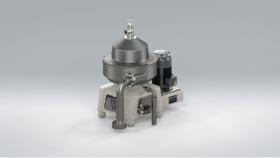
FLOTTWEG SE
Germany
The Flottweg AC1700 separator – the newest member of the Flottweg family Separators are used to separate the finest solid particles from liquids. Separators are available from Flottweg for a wide range of applications, from the production of beverages to the production of vegetable oil. Our separators are subject to different requirements depending on the application and size of the respective plant. To be able to offer our customers more options and the optimum solution, we have expanded our separator portfolio with a new machine size: the Flottweg AC1700 separator. The Flottweg AC1700 separator fits between our popular AC1500 and AC2000 series and completes our product portfolio for the food and beverage industry. With over 70,000 m² / 753,474 ft² of clarification area and an acceleration of 11,000 g, the compact separator ensures an optimally clarified final product with a high throughput.
Request for a quote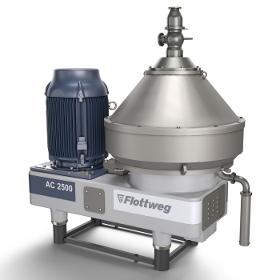
FLOTTWEG SE
Germany
Disc stack centrifuges are high-speed centrifuges for the mechanical separation and clarification of mixtures comprising solids and liquids. Due to their special design, disc stack centrifuges work at a very high rotation speed. As a result, the centrifugal acceleration (g-force) generated by a disc stack centrifuge is extremely powerful. Moreover, the discs included provide a large clarifying area. Thus, it is possible to separate ultrafine solid particles from a liquid and to separate liquid mixtures in an efficient way.
Request for a quote
IREMA-FILTER GMBH
Germany
In the field of highly efficient filter materials, we have developed proprietary synthetic filter media produced with various fiber diameters and available in different grammages. With a particle separation of up to 99,99%, our media also feature a low pressure drop together with high softness. Due to endless fibers no fiber shedding occurs. We support our customers with filter media material as roll goods for respirator masks or pleatable material.
Request for a quote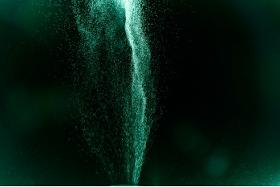
DRESSLER GROUP
Germany
Method for determining the grain size; air jet sieve, vibrating sieve, but also used in a production system for separating the coarse component of a powder so as to obtain the desired grain size distribution. Using acceleration to separate particles of different weights and therefore mostly different sizes.
Request for a quoteFAUDI GMBH
Germany
Advantages Absolute separation of liquid particles greater than 10; for the operation under etreme temperature and pressure; minimal pressure loss Area of application For the filtration of natural gas Flow rate Various filter sizes and the modular design enable any required flow rate. classification number P51 Filter aid - Filtration degree - Medium Air, gases Filter material Wired Mesh
Request for a quoteFAUDI GMBH
Germany
Advantages Certified Gas Separator; maintenance-free operation; for the separation of rough particles Area of application For the use at refuelling points of aviation fuel, gasoline and hydrocarbon Flow rate Various filter sizes and the modular design enable any required flow rate. classification number P55 Filter aid - Filtration degree - Medium Nitrogene, gases Filter material Perforated Plate Cylinder Mesh
Request for a quote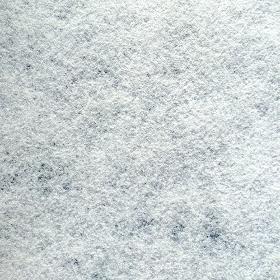
FILTERTECHNIK JÄGER GMBH
Germany
The polyester high-performance fleece Cora®Deep has a fibre matrix of fine and very fine fibres. Compared to conventional fleeces, it also has a larger layer thickness. Due to the very large amount of "free pores" Cora®Deep achieved above-average dirt-holding capacity (depth filtration). The controlled thermal stabilisation of the high-performance nonwoven allows a classified separation of the particles (large, medium, fine). The Cora®Deep nonwovens are subjected to a novel surface treatment process in order to meet the increasing requirements for a minimum fibre release of filter fabrics: Glazing - a combination of flames and calendering. This means that even the finest particles (5μ, 2μ) are retained.
Request for a quote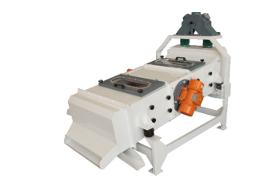
ZORLU DEGIRMEN MAKINALARI LTD. STI.
Turkey
The grain separator is used to separate small and big foreign materials (paper, straws, corn, soil etc. ) from the grain. The product is evenly distributed on the sieves by the adjustment gate at the grain intake as well as the distribution devices on the sieves. The machine consists of a vibrating body installed on a stable chassis. It is driven by two symmetrical vibration motors. The vibration level of the machine is adjusted by changing the inclination level of these motors. Rubber vibration dampeners are used to isolate the vibration. There are two layers of sieves in the grain separator. While the first layer separates the particles bigger than the grain, the second layer separates smaller particles. The grain separator has to be used with an air-channel or radial air separator. This way, the light particles are removed as well.
Request for a quote
TOMECH SOLUTIONS
Romania
Screens play a crucial role in material handling and sorting processes by separating particles based on size, shape, and composition. They are commonly used in industries such as mining, construction, recycling, and agriculture to classify and sort bulk materials efficiently. Screens consist of a surface with apertures or perforations of varying sizes, through which material passes. As the material moves across the screen surface, particles smaller than the aperture size fall through, while larger particles are retained. Screens can be vibratory or stationary, depending on the application and required throughput. We specialize in screen design services, offering customized solutions to optimize screening efficiency, throughput, and product quality. Our expertise encompasses the design, selection of screen media, and configuration of screening equipment to meet the specific needs of our clients and enhance the performance of their material handling and sorting operations.
Request for a quote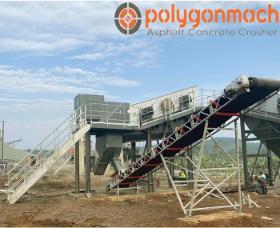
POLYGONMACH MAKINE SANAYI VE TICARET LTD STI
Turkey
Vibrating horizontal and sloping screens are types of screening equipment commonly used in various industries to sort, classify, and separate materials based on size. Horizontal screens are designed with a level screening deck that vibrates horizontally, allowing materials to move smoothly across the screen surface. This horizontal movement helps in effectively screening materials, separating finer particles from larger ones. On the other hand, sloping screens are inclined at an angle, providing a sloped screening surface that allows materials to cascade down the screen. The sloping motion facilitates the movement of materials along the screen deck, aiding in the separation process based on size as particles pass through the screen apertures. Both vibrating horizontal and sloping screens operate using vibrating mechanisms that create controlled vibrations to move materials along the screen decks.
Request for a quote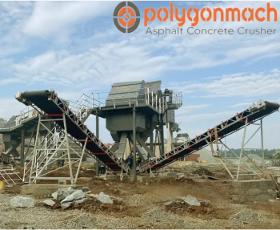
POLYGONMACH MAKINE SANAYI VE TICARET LTD STI
Turkey
Vibrating, inclined screens are specialized equipment used in various industries for the efficient screening and separation of materials based on size. These screens are designed with a sloped deck that allows materials to move along the surface while being subjected to vibrating motions. The vibrating motion, typically generated by a motor, causes the material to stratify and separate according to size as it moves down the inclined surface. This screening process helps to classify materials into different fractions based on particle size, allowing for the separation of finer particles from coarser ones. Vibrating, inclined screens are commonly employed in applications where precise material separation is essential, such as in mining, aggregate production, and recycling operations.
Request for a quoteDo you sell or make similar products?
Sign up to europages and have your products listed
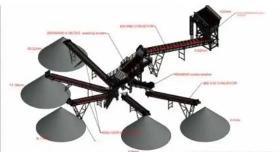
POLYGONMACH MAKINE SANAYI VE TICARET LTD STI
Turkey
Compact Sand Washing Plants are small, specifically designed plants developed for the effective cleaning and separation of sand particles in industrial applications. Most of the plants consist of a combination of equipment, including a sand washer, dewatering screen, hydrocyclones, and fine material washers, all integrated into one compact and mobile unit. Compact Sand Washing Plants are mainly designed to remove impurities, silt, and contaminants from sand to leave the final product clean, well-graded, and fit for use in construction, concrete production, and other industrial procedures. These plants integrate several washing and screening mechanisms in an integrated compact design, ensuring high effectiveness in washing and dewatering sand while guaranteeing better output quality at space and operationally lower footprints.
Request for a quote
POLYGONMACH MAKINE SANAYI VE TICARET LTD STI
Turkey
The Rake Thickener System is what equipment is commonly used in industries for thickening slurries or suspensions through separating them from solids by means of apparatus. Usually, it will have a tank or a basin where slurry shall be introduced, with a mechanism that provides movement similar to the rake arm or blade, which rotates slowly in the tank. The rake arm travels through the slurry, picking up settled solids from the bottom of the tank and moving them very slowly towards the center for removal. Continuous rotation of this rake arm facilitates the effective concentration of solid particles in slurry, finally separating a thickened underflow from a clarified liquid overflow. The rake thickener system is basically based on sedimentation, where the slurry's gravity makes solid particles settle at the bottom while the liquid rises to the top.
Request for a quote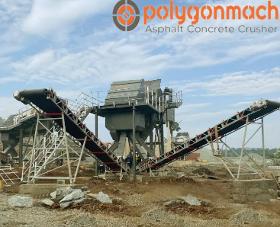
POLYGONMACH MAKINE SANAYI VE TICARET LTD STI
Turkey
Vibrating, inclined screens are specialized equipment used in various industries for the efficient screening and separation of materials based on size. These screens are designed with a sloped deck that allows materials to move along the surface while being subjected to vibrating motions. The vibrating motion, typically generated by a motor, causes the material to stratify and separate according to size as it moves down the inclined surface. This screening process helps to classify materials into different fractions based on particle size, allowing for the separation of finer particles from coarser ones. Vibrating, inclined screens are commonly employed in applications where precise material separation is essential, such as in mining, aggregate production, and recycling operations. These screens are effective in removing unwanted materials, maximizing screening efficiency, and improving the quality of the final product.
Request for a quote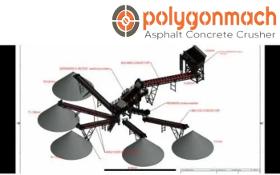
POLYGONMACH MAKINE SANAYI VE TICARET LTD STI
Turkey
Compact Sand Washing Plants are small, specifically designed plants developed for the effective cleaning and separation of sand particles in industrial applications. Most of the plants consist of a combination of equipment, including a sand washer, dewatering screen, hydrocyclones, and fine material washers, all integrated into one compact and mobile unit. Compact Sand Washing Plants are mainly designed to remove impurities, silt, and contaminants from sand to leave the final product clean, well-graded, and fit for use in construction, concrete production, and other industrial procedures. These plants integrate several washing and screening mechanisms in an integrated compact design, ensuring high effectiveness in washing and dewatering sand while guaranteeing better output quality at space and operationally lower footprints.
Request for a quote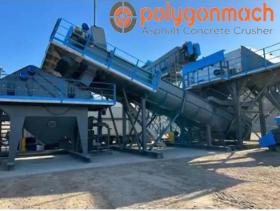
POLYGONMACH MAKINE SANAYI VE TICARET LTD STI
Turkey
The Rake Thickener System is what equipment is commonly used in industries for thickening slurries or suspensions through separating them from solids by means of apparatus. Usually, it will have a tank or a basin where slurry shall be introduced, with a mechanism that provides movement similar to the rake arm or blade, which rotates slowly in the tank. The rake arm travels through the slurry, picking up settled solids from the bottom of the tank and moving them very slowly towards the center for removal. Continuous rotation of this rake arm facilitates the effective concentration of solid particles in slurry, finally separating a thickened underflow from a clarified liquid overflow.
Request for a quote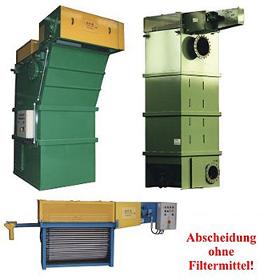
F.E.S. GMBH
Germany
Chain Magnetic Separator are used for the cleaning of liquids contaminated with magnetizable solid particles and foreign oils. F.E.S. separator systems can be used in full-flow or bypass cleaning applications. The separation performance varies depending on the level of contamination and the volume flow rate. Note: The separator systems can be supplied via a separate supply pump, existing system pumps (with sufficient reserve capacity within the existing system components), or a free inlet (with sufficient geodetic height difference). Advantages: No filter aids required High separation efficiency Large throughput capacity Large active separation surface due to favorable separation geometry and optimal arrangement of magnets Low wear and tear Operating Principle: The contaminated liquid is supplied to the separator through the flange (1) located at the bottom.
Request for a quote
GEBRÜDER LÖDIGE MASCHINENBAU GMBH
Germany
The granulation dryer is designed for continuous operation. A unique property of this dryer is its combination of convection and contact drying. Adaptation of the retention time to the specific process ensures that products are dried at low temperatures. At the same time, excellent granulation of the final product can be achieved. This intense mixing effect separates the particles in the fluid bed, thereby creating a large product surface and preventing the generation of temperature and moisture gradients in the product bed. This leads to a significant increase in the heat exchange via the heated drum walls. The product behaviour during drying is affected by the mixing tool geometry and choppers can be activated as an option; these can be used to control the average product retention time and the retention time distribution. It is therefore possible to achieve a defined grain size distribution during granulation processes
Request for a quote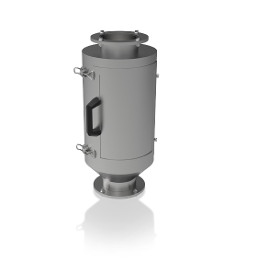
MAKENAS GRAIN MILLING TECHNOLOGY
Turkey
It is used to separate metallic particles from the grains
Request for a quote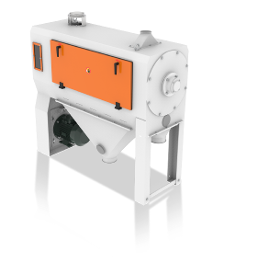
MAKENAS GRAIN MILLING TECHNOLOGY
Turkey
It is used to separate the flour particles, which are stuck and mixed with bran, contributing to the yield increase and preventing the waste of flour’s
Request for a quote
MAKENAS GRAIN MILLING TECHNOLOGY
Turkey
It is used to separate the sticky particles in the moist flour that passes through the filter and comes from the bran
Request for a quote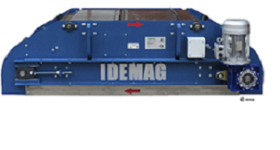
IDEMAG
Spain
The electromagnetic separators suspended on conveyor belts are the most effective equipment for removal of ferrous contamination from other nonferrous materials. Consist of an electromagnet which creates powerful magnetic fields that are generated by electrical coils which provide the required attractive force to separate the iron pieces. The self-cleaning of the equipment is performed by a resistant rubber belt and provided with transverse projections.This facilitates the transport of material and separation of the captured contamination throwing it to one side of the conveyor. The belt is mounted on a metal frame with pulleys that rotate with its bearings and is driven by an electric motor with a speed reducer; belt tensioning is done through a deflection drum. Its main mission is the protection of crushing and grinding equipment against damage and wear caused by the presence of iron pieces.The electromagnetic overbands separate ferrous particles from other materials in recycling pr.
Request for a quote
RIPPERT ANLAGENTECHNIK GMBH & CO. KG
Germany
For the conveying of filtered-out materials to silos or containers. Pneumatic low-pressure conveyor systems For the conveying of filtered-out materials to silos or containers and for conveying distances of up to 200 m. The conveying air stream is generated by one or more fans. Product description Pneumatic low-pressure conveyor systems can be implemented as a single-pipe system or a ring system. In the case of the single-pipe system, a final separator in the form of a filter or a cyclone is always necessary. In a ring system the conveying air is driven in the ring. In this case the silo or container acts as the separator. Light dust particles that are not separated in the silo or container initially remain in the circulation. With most materials the fine dust particles tend to attach themselves to the coarser ones and are thus separated with them. Hence, a concentration of the fine dust particles in the conveying stream is avoided as far as possible. The loading of the conveying stream essentially depends on the grain size, density and form of the material to be conveyed. As a guiding value, one may assume 250 - 300 g/m³. Higher loads are possible under certain conditions. In cases where there is a high amount of material, e.g. in planing works, where the splinters are directly removed and transported away for further use, this can also be realised with a ring system and several containers. Switchover takes place automatically when the container signals that it is full. Containers are exchanged during operation.
Request for a quoteResults for
Particle separation - Import exportNumber of results
63 ProductsCategory
- Filtering equipment and supplies (6)
- Concrete preparing - machinery and equipment (4)
- Crushing and grinding machinery (4)
- Flour milling - machinery and equipment (4)
- Import-export - mechanical engineering (3)
- Magnetic equipment (3)
- Wood veneer - machinery and equipment (3)
- Electronic components (2)
- Food Industry - Machines & Equipment (2)
- Gas filters (2)
- Air purification - equipment and systems (1)
- Central heating systems (1)
- Cleaning machines, industrial (1)
- Engineering - industrial consultants (1)
- Grinding - steels and metals (1)
- Hydraulic equipment (1)
- Industrial equipment hire (1)
- Industrial washing facilities (1)
- Masks, safety (1)
- Measurement and regulation equipment and instruments - output and flow (1)